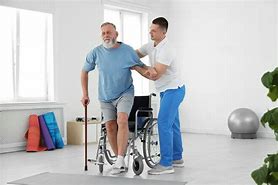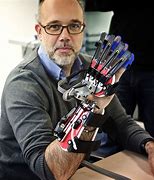



Stroke is the number one cause of serious adult disability in the United States. Stroke disability is devastating to the stroke patient and family, but therapies are available to help rehabilitate patients after stroke.
For most stroke patients, rehabilitation mainly involves physical therapy. The aim of physical therapy is to have the stroke patient relearn simple motor activities such as walking, sitting, standing, lying down, and the process of switching from one type of movement to another.
Rehabilitation should begin as soon as the patient stabilizes. Generally, this first stage of rehabilitation occurs in the hospital. In planning for discharge from the hospital, the patient and their family, with the support of the social workers or case manager, must determine the best place for the patient’s care. Many patients return home, but others benefit from time in a rehabilitation program to continue recovery.
Inpatient rehabilitation may be located independently or may be part of a large hospital complex. Patients usually remain in the facility for two or three weeks and participate in an intensive, coordinated rehabilitation program. These programs often include at least three hours per day of active therapy, five or six days a week. Inpatient facilities offer a full suite of medical services, including 24-hour doctor supervision and access to a full range of therapists specializing in rehabilitation after a stroke.
Another type of therapy to help patients relearn daily activities is occupational therapy. This type of therapy also involves exercise and training. Its goal is to help the stroke patient relearn everyday activities such as eating, drinking and swallowing, dressing, bathing, cooking, reading and writing, and using the toilet. Occupational therapists seek to help the patient become independent or semi-independent.
Many patients go to what is called a SNF (meaning skilled nursing facility) from the acute hospital where the pt first when to with the stroke. The rehabilitation services available in SNFs are for patients no longer needing hospital care but who still require some nursing services and a less intensive rehabilitation program with fewer hours of required therapy participation.
These are long-term care facilities for those patients no longer needing full hospital care but who still require 24-hour access to nursing support. Rehabilitation services may be offered to individuals in these facilities as they qualify. For some pts they go home but others possibly not depending on how independent this pt is in being safe home alone or even with family to handle assisting the pt in there activities of daily living they may need assistance with. Safety is the big factor with how independent the pt is.
Speech therapy helps stroke patients relearn language and speaking skills, or learn other forms of communication. Speech therapy is appropriate for patients who have no problems with cognition or thinking, but have problems understanding speech or written words, or problems forming speech. With time and patience, a stroke survivor should be able to regain some, and sometimes all, language and speaking abilities.



